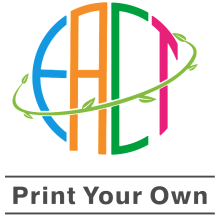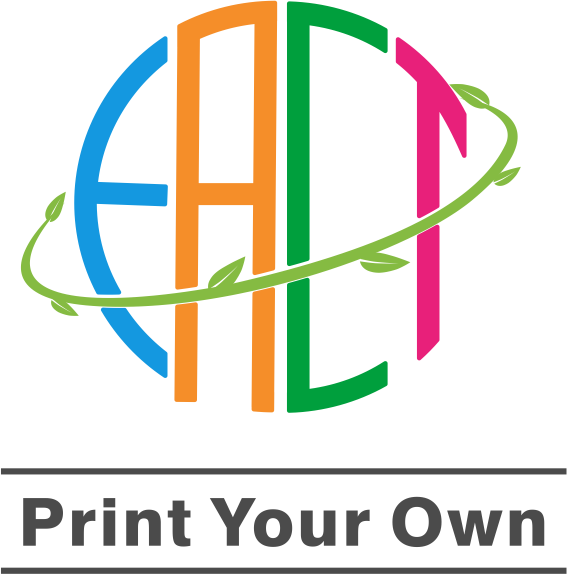Explore the Possibilities of Fabric Printing
If you are looking for a way to get your logo on a variety of products, fabric printing could be the right solution for you. Though t-shirts and textile bags are among the most common types of fabric printed products, there are many other possibilities you can explore. These range from tea towels for kitchens to swim caps for personal trainers. Textile products are practical, durable, and can show your brand's values and identity.
custom fabric printing
If you have a creative design, you may want to explore the possibility of custom fabric printing. This unique process will allow you to customize every fibre of a fabric. This gives your products a more unique appearance and a more completed feel. This method of fabric printing is ideal for apparel and crafts. It is simple to use and can be very rewarding for both you and your customers.
Fabric printing companies offer a wide variety of designs and will allow you to change the size of the design to match your needs. You can even upload your own artwork to have it printed on the fabric. However, make sure that you choose a company that offers in-house fabric printing. This will give you more control over the quality of the final product.
Before choosing a fabric printer, it's important to do some research on their process and materials. Different companies use different kinds of dyes and inks. Make sure to choose eco-friendly dyes and inks. If you're concerned about the environment, choose a fabric printing company that uses water-based or organic inks.
Digital fabric printing involves the use of speciality dyes to ensure sharp, vivid images. Digital printing experts apply the dyes to the fabric at temperatures between 380 and 420 degrees. Each color is applied to the fabric one at a time and then a protective coating is rolled over it to ensure the image stays intact.
digital fabric printing
Digital fabric printing is a technique that uses ink jet technology to print colorants onto fabric. It can be used to print small designs on garments, or large designs on rolls of textile. It can also be used for advertising campaigns, and is especially useful in fashion design. Digital fabric printing allows designers to create more intricate patterns than ever before, without the need to spend thousands of dollars on print materials.
The advantages of digital fabric printing over traditional methods are many. It is an eco-friendly process that saves energy and water, while providing quality and cost-effective design. Furthermore, it is flexible, allowing designers to make changes without incurring additional costs. It also promotes timely delivery, and helps reduce inventory costs. Furthermore, it is environment-friendly, reducing water consumption and air pollution compared to traditional printing processes.
Digital fabric printing uses various dyes, depending on the type of fabric. For example, acid inks are used on silk and nylon, and disperse inks are used for polyesters. Reactive inks, on the other hand, are used on all cellulose-based fabrics. These inks are eco-friendly because they stay on the fabric surface.
Digital fabric printing is less complicated than it sounds. However, you should be aware of the different types of printing methods before you buy a machine. In particular, you should know about dye-sublimation and direct-to-garment printing. These technologies allow you to print anything you want without limits, including colours, tonal transitions, and other factors.
custom fabric printing wholesale
If you are looking for a custom fabric printing wholesaler, you've come to the right place. Custom fabric printing wholesalers can help you achieve your custom fabric design goals with the help of their vast assortment of fabrics and design options. From simple embroidered designs to more complex patterns, these companies can help you create your custom fabric designs.
Custom fabric printing wholesalers can offer competitive pricing and fast turnaround times. They also have a wide variety of printing services. Whether you need small quantities or large orders, you'll find the perfect supplier. A good place to begin is a print-on-demand marketplace such as Spoonflower, which pairs makers with artists. Initially a fabric-by-the-yard company, Spoonflower has since expanded to include wallpaper, bedding, and other home decor items. In addition, Spoonflower accepts Visa, MasterCard, and American Express as payment methods.
Custom fabric printing wholesale can be done on a variety of fabrics, but the choice depends on the art you're using and the quality of the material. A solid color, for example, requires a different fabric than a halftone. Cotton, for example, shrinks easily, while blends are immune to shrinking and don't lose color as quickly. Also, the ink used and the temperature at which it cures will influence the quality of the fabric print.
Digital printing methods have improved the quality and flexibility of custom fabric printing. With this type of printing, you can create highly-styled graphic t-shirts, trendy fabrics, and custom fashion designs. Digital printing has also become increasingly popular in interior design, where wallpapers are customised to reflect a brand. Fabric printing is ideal for creating custom branded fabrics and custom booths at trade shows.
custom fabric printing
If you have a creative design, you may want to explore the possibility of custom fabric printing. This unique process will allow you to customize every fibre of a fabric. This gives your products a more unique appearance and a more completed feel. This method of fabric printing is ideal for apparel and crafts. It is simple to use and can be very rewarding for both you and your customers.
Fabric printing companies offer a wide variety of designs and will allow you to change the size of the design to match your needs. You can even upload your own artwork to have it printed on the fabric. However, make sure that you choose a company that offers in-house fabric printing. This will give you more control over the quality of the final product.
Before choosing a fabric printer, it's important to do some research on their process and materials. Different companies use different kinds of dyes and inks. Make sure to choose eco-friendly dyes and inks. If you're concerned about the environment, choose a fabric printing company that uses water-based or organic inks.
Digital fabric printing involves the use of speciality dyes to ensure sharp, vivid images. Digital printing experts apply the dyes to the fabric at temperatures between 380 and 420 degrees. Each color is applied to the fabric one at a time and then a protective coating is rolled over it to ensure the image stays intact.
digital fabric printing
Digital fabric printing is a technique that uses ink jet technology to print colorants onto fabric. It can be used to print small designs on garments, or large designs on rolls of textile. It can also be used for advertising campaigns, and is especially useful in fashion design. Digital fabric printing allows designers to create more intricate patterns than ever before, without the need to spend thousands of dollars on print materials.
The advantages of digital fabric printing over traditional methods are many. It is an eco-friendly process that saves energy and water, while providing quality and cost-effective design. Furthermore, it is flexible, allowing designers to make changes without incurring additional costs. It also promotes timely delivery, and helps reduce inventory costs. Furthermore, it is environment-friendly, reducing water consumption and air pollution compared to traditional printing processes.
Digital fabric printing uses various dyes, depending on the type of fabric. For example, acid inks are used on silk and nylon, and disperse inks are used for polyesters. Reactive inks, on the other hand, are used on all cellulose-based fabrics. These inks are eco-friendly because they stay on the fabric surface.
Digital fabric printing is less complicated than it sounds. However, you should be aware of the different types of printing methods before you buy a machine. In particular, you should know about dye-sublimation and direct-to-garment printing. These technologies allow you to print anything you want without limits, including colours, tonal transitions, and other factors.
custom fabric printing wholesale
If you are looking for a custom fabric printing wholesaler, you've come to the right place. Custom fabric printing wholesalers can help you achieve your custom fabric design goals with the help of their vast assortment of fabrics and design options. From simple embroidered designs to more complex patterns, these companies can help you create your custom fabric designs.
Custom fabric printing wholesalers can offer competitive pricing and fast turnaround times. They also have a wide variety of printing services. Whether you need small quantities or large orders, you'll find the perfect supplier. A good place to begin is a print-on-demand marketplace such as Spoonflower, which pairs makers with artists. Initially a fabric-by-the-yard company, Spoonflower has since expanded to include wallpaper, bedding, and other home decor items. In addition, Spoonflower accepts Visa, MasterCard, and American Express as payment methods.
Custom fabric printing wholesale can be done on a variety of fabrics, but the choice depends on the art you're using and the quality of the material. A solid color, for example, requires a different fabric than a halftone. Cotton, for example, shrinks easily, while blends are immune to shrinking and don't lose color as quickly. Also, the ink used and the temperature at which it cures will influence the quality of the fabric print.
Digital printing methods have improved the quality and flexibility of custom fabric printing. With this type of printing, you can create highly-styled graphic t-shirts, trendy fabrics, and custom fashion designs. Digital printing has also become increasingly popular in interior design, where wallpapers are customised to reflect a brand. Fabric printing is ideal for creating custom branded fabrics and custom booths at trade shows.

 USD
USD



